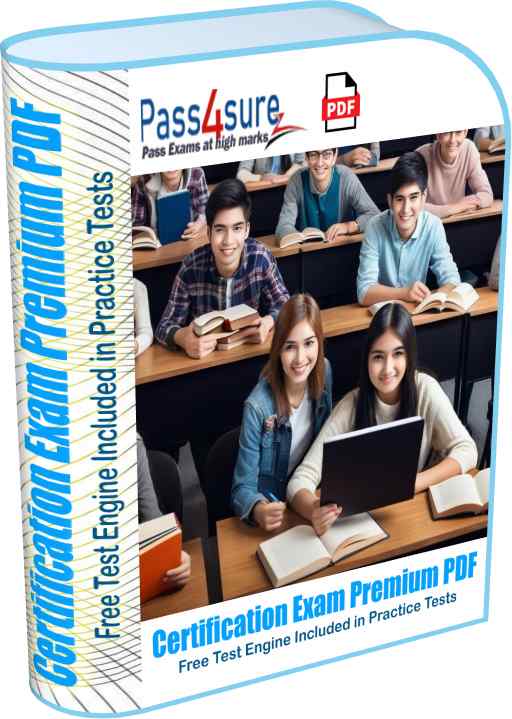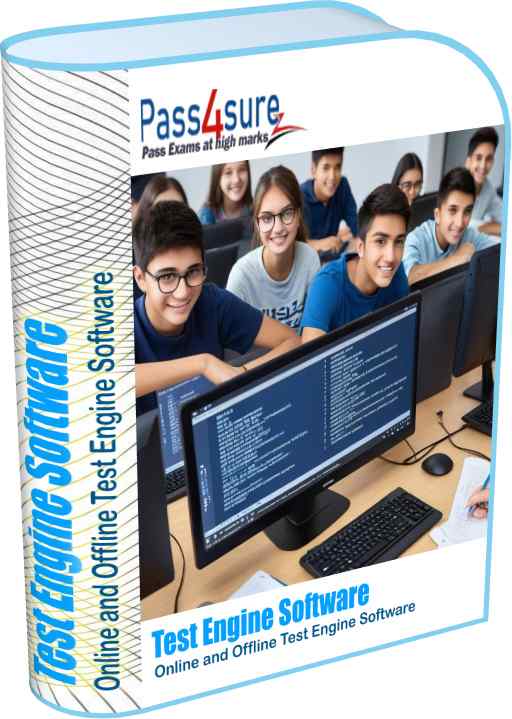| Exam Code | Mulesoft-CD |
| Questions and Answers | 118 |
| Premium Access | Yes |
| Online Test Engine | Yes |
| Comprehensive Q&A | Yes |
| Success Rate | 98% |
| Real Questions | Yes |
| Updated Regularly | Yes |
| Portable Files | ✔ |
| Unlimited Download | ✔ |
| 100% Secured | ✔ |
| Confidentiality | 100% |
| Success Guarantee | 100% |
| Any Hidden Cost | $0.00 |
| Auto Recharge | No |
| Updates Intimation | by Email |
| Technical Support | Free |
| PDF Compatibility | Windows, Android, iOS, Linux |
| Test Engine Compatibility | Mac/Windows/Android/iOS/Linux |
| Sample Questions |  |
Pass4sure Practice Tests are an effective way to prepare for the Mulesoft-CD exam. The practice tests include premium PDF and Test Engine Software. Pass4surez.in provides an extensive question bank to improve your knowledge and help you achieve high marks on the Mulesoft-CD exam.
The MuleSoft Certified Developer -Level 1 (MCD-Level1) exam questions and answers on Pass4surez.in are regularly verified and updated to ensure they reflect the latest syllabus and topics covered in the real test. The certification exams and entry test exams from pass4surez.com make you familiar with the test environment. The goal is to enhance your knowledge of the Mulesoft-CD exam and enable you to pass it on your first attempt.
The PDF of Mulesoft-CD exam questions and answers provided by Pass4surez.in contains a comprehensive pool of questions and verified answers, including references and explanations where applicable. The objective is not only to help you pass the exam, but also to significantly improve your knowledge of the latest Mulesoft-CD course topics.
 |
|
CERTIFICATION EXAM PREMIUM PDF
Pass4Sure provide premium PDF that contains all the questions and answers that are necessary to make your concepts about the exam topics clear and boost your knowledge about the exam. These questions and answers make you ready to face actual test in test centers. Our team keep on revising material and update the exam questions accordingly. You will feel confident in test center. Our support team keep on helping our customers to make their testing experience best. Our premium PDF files are searchable, convertable and printable at high quality to make book that you can study during traveling or during vacations. Our automated system sends intimation email to our customers on each update. The files in customer download section is overwritten with latest pdf files.
|
| |
|
 |
|
CERTIFICATION EXAM TEST ENGINE
Pass4sure test engine is best certification and examination preparation tool that help you make yourself ready to take the actual exam and get high marks in the exam. Our OTE (Online Test Engine) support all OS Platforms including iOS, Android, Windows, Linux, Chromebook etc and provide up to date experience to get ready for actual test. Our Offline Test Engine is compatible to all windows platforms including latest windows versions. Our test engines helps to familiarize actual test environment and makes you ready to take timed tests. Your performance history and graphs helps you to see when you are ready to sit in actual exam in test center. These test engines uses up to date and latest questions and answers, keeps on updating the questions pool and sends you intimation on each update.
|
Pass4sure Premium PDF and Test Engines support all platforms and devices including mobile devices and computers. You should download sample PDF and Test Engine to evaluate the product before you buy the full version. Our exam samples include some questions that may be or may not be up to date but full version is always up to date.
Format: Multiple-choice, closed book, proctored online or in a testing center
Length: 60 questions
Duration: 120 minutes (2 hours)
Pass score: 70%
Language: English
The exam can be taken a maximum of 5 times, with a 24 hour wait between each attempt.
Description
MuleSoft Certified Developer - Level 1 (Mule 4)A MuleSoft Certified Developer – Level 1 should be able to successfully work on basic Mule 4 projects with guidance and supervision. The MCD – Level 1 (Mule 4) exam validates that a developer has the required knowledge and skills to design, build, test and debug, deploy, and manage basic APIs and integrations: moving from Anypoint Platform to Anypoint Studio and back. S/he should be able to:
- Use MuleSoft-hosted Anypoint Platform to take a basic API through all the steps of its lifecycle: design, build, deploy, manage, and govern.
- Use Anypoint Studio to build, test, and debug basic integrations and API implementations.
- Connect to a range of resources including databases, files, web services, SaaS applications, and JMS queues.
- Perform basic data transformations using DataWeave 2.
- Control event flow and handle errors.
- Process batch records.
Explain MuleSofts proposal for closing the IT delivery gap
Describe the role and characteristics of the “modern API”
Describe the purpose and roles of a C4E
Define and describe the benefits of API-led connectivity and application networks
Define and correctly use the terms API, API implementation, API interface, API consumer, and API invocation
Describe the basics of the HTTP protocol and characteristics of requests and responses
Describe the capabilities and high-level components of Anypoint Platform for the API lifecycle
DEV:FUN4 Module 1
DEV:FUN4 Module 2
Designing and Consuming APIs
Describe the lifecycle of the “modern API”
Use RAML to define API resources, nested resources, and methods
Identify when and how to define query parameters vs URI parameters
Use RAML to define API parameters, requests, and responses
Use RAML to define reusable data types and format independent examples
Read a RAML spec and formulate RESTful requests with query parameters and/or headers as appropriate
DEV:FUN4 Module 3
DEV:DIY4 Exercise 3-1 and 4-1
Accessing and Modifying Mule Events
Describe the Mule event data structure
Use transformers to set event payloads, attributes, and variables
Write DataWeave expressions to access and modify event payloads, attributes, and variables
Enrich Mule events using target parameters
DEV:FUN4 Module 6
DEV:DIY4 Exercise 6-1, 7-1, and 7-2
Enriching Data with Target Parameters
Structuring Mule Applications
Parameterize an application using property placeholders
Define and reuse global configurations in an application
Break an application into multiple flows using private flows, subflows, and the Flow Reference component
Specify what data (payload, attributes, variables) is persisted between flows when a Flow Reference is used
Specify what data (payload, attributes, variables) is persisted between flows when a Mule event crosses a connection boundary
Specify what data (payload, attributes, variables) exists in a flow before and after a call in the middle of a flow to an external resource
DEV:FUN4 Module 7
DEV:DIY4 Exercise 7-1 and 7-2
Building API Implementation Interfaces
Manually create a RESTful interface for a Mule application
Generate a REST Connector from a RAML specification
Describe the features and benefits of APIkit
Use APIkit to create implementation flows from a RAML file
Describe how requests are routed through flows generated by APIkit
DEV:FUN4 Module 4
DEV:FUN4 Module 8
DEV:DIY4 Exercise 4-1
Routing Events
Use the Choice router to route events based on conditional logic
Use the Scatter-Gather router to multicast events
Validate data using the Validation module
DEV:FUN4 Module 9
DEV:DIY4 Exercise 9-1
Handling Errors
Describe the default error handling in a Mule application
Define a custom global default error handler for an application and identify in what situations it will be used
Compare and contrast how the On Error Continue and On Error Propagate scopes work
Create one or more error handlers for a flow
Use the Try scope to specify error handlers for one or more event processors
Describe the data structure of the Mule Error object
Map errors to custom application errors
DEV:FUN4 Module 10
DEV:DIY4 Exercise 10-1
Transforming Data with DataWeave
Write DataWeave scripts to convert JSON, XML, and Java data structures to different data structures and data types
Use DataWeave functions
Define and use DataWeave variables, functions, and modules
Define and use custom data types
Apply correct DataWeave syntax to coerce data types
Apply correct DataWeave syntax to format strings, numbers, and dates
Call Mule flows from a DataWeave script
DEV:FUN4 Module 11
DEV:DIY4 Exercise 11-1
Using Connectors
Retrieve data from a Database using the Database connector
Create parameterized SQL queries for the Database connector
Retrieve data from a REST service using HTTP Request or a REST Connector
Use a Web Service Consumer connector to consume SOAP web services
Use the Transform Message component to pass arguments to a SOAP web service
List, read, and write local files using the File connector
List, read, and write remote files using the FTP connector
Use the JMS connector to publish and listen for JMS messages
DEV:FUN4 Module 4
DEV:FUN4 Module 8
DEV:FUN4 Module 12
DEV:DIY4 Exercise 4-1, 8-1, 12-1, and 12-2
Processing Records
List and compare and contrast the methods for processing individual records in a collection
Explain how Mule events are processed by the For Each scope
Use the For Each scope to process records
Explain how Mule events are processed by the Batch Job scope
Use a Batch Job with Batch Steps and a Batch Aggregator to process records
Use the Scheduler component to trigger a flow
Use connector listeners to trigger flows
Describe the features, benefits, and process to use watermarking
Describe the features, benefits, and process to use automatic watermarking vs. manual watermarking
Use connectors with automatic watermarking capabilities
Persist data between flow executions using the Object Store
DEV:FUN4 Module 12
DEV:FUN4 Module 13
DEV:DIY4 Exercise 13-1
Debugging and Troubleshooting Mule Applications
Use breakpoints to inspect a Mule event during runtime
Install missing Maven dependencies
Read and decipher Mule log error messages
DEV:FUN4 Module 6
DEV:FUN4 all WTs
DEV:DIY4 Exercise 6-1 and Walkthrough
DEV:DIY4 all exercises
Deploying and Managing APIs and Integrations
Package Mule applications for deployment
Deploy applications to CloudHub
Use CloudHub properties to ensure deployment success
Create and deploy API proxies
Connect an API implementation to API Manager using autodiscovery
Use policies, including client ID enforcement, to secure an API
Create SLA tiers and apply SLA based policies
DEV:FUN4 Module 5
DEV:DIY4 Exercise 5-1 and 5-2
Configuring API Autodiscovery in a Mule 4 Application
You can download a free PDF of the Mulesoft-CD practice test and study guide to try before purchasing the premium files. To ace the exam, simply download the Mulesoft-CD exam questions and answers file, memorize the content, and practice with the VCE Exam Simulator. This will ensure you are fully prepared for the real test.
The Mulesoft-CD PDF practice test and exam questions and answers can be accessed on any device, including iPhone, iPad, Android, and Windows. You can download the PDF to your computer or any other device and start studying. Additionally, you can download and install the VCE Exam Simulator for further practice. The Mulesoft-CD PDF is printable in high quality, allowing you to take it with you on vacations or while traveling. Your updated Mulesoft-CD exam files can be accessed anytime from your online account, and you will receive your login credentials immediately after purchase.


